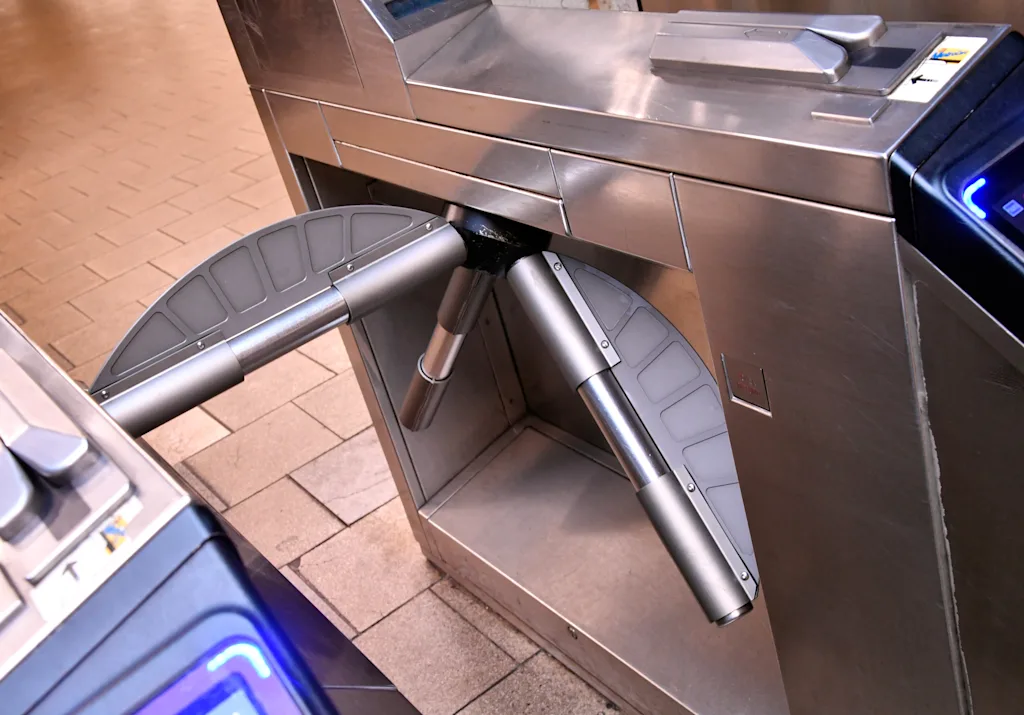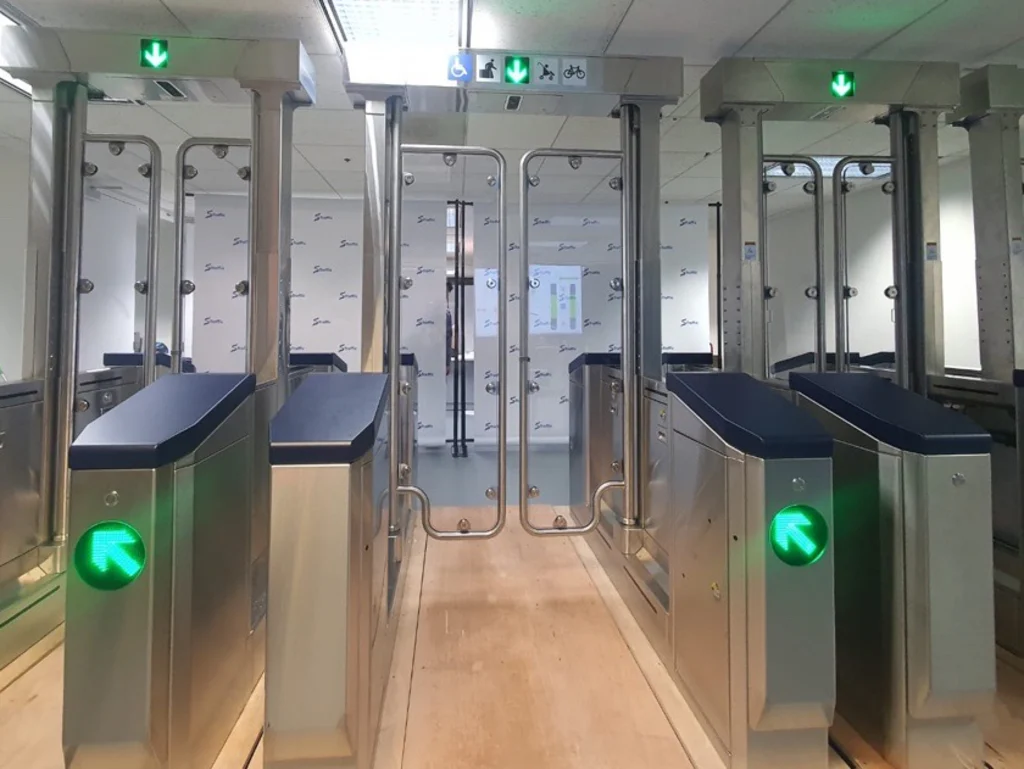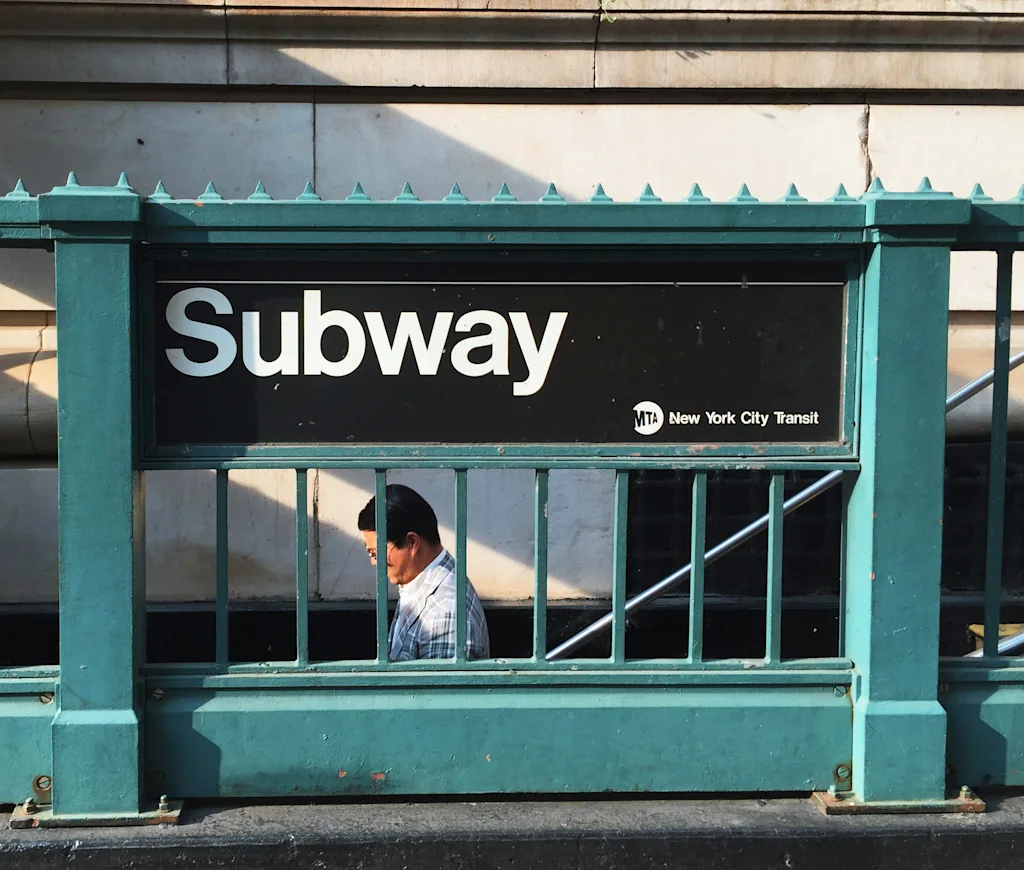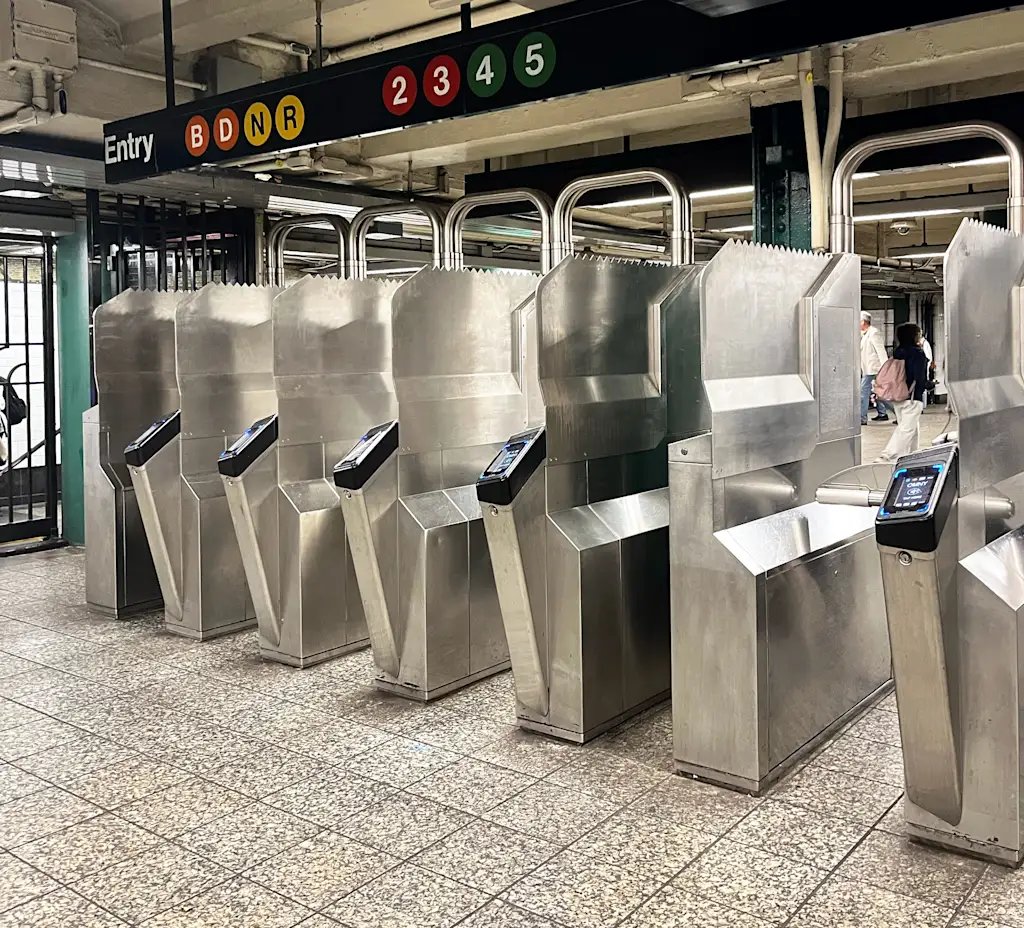In January 2025, subway riders at the 59th Street-Lexington Avenue station in Manhattan noticed a surprising new addition: spiked metal partitions between each fare gate. Some commuters called the partitions “silly and foolish.” Others said they were “a waste of money.”
Over the past nine months, the Metropolitan Transportation Authority has rolled out the same spiked partitions to 183 stations across the subway network, with more on the way. Like spikes on a handrail prevent people from sitting on it, these metal screens (which the MTA calls “sleeves”) are designed to prevent people from hoisting themselves over the turnstiles. They’ve also turned what was already an inhospitable system into an actively hostile public space.
The MTA argues it has good reason to take these measures. About 40% of the agency’s operating budget comes from fares and tolls, meaning every tap and every swipe helps keep trains and buses running. But many riders aren’t paying at all. In 2024, fare evasion on the subway cost the agency around $350 million, though it topped $1 billion if you include unpaid buses, trains, and tolls.
At 59th Street-Lexington Avenue, the spiked partitions, which were custom-made specifically for the New York subway, seem to have worked. According to an April 2025 MTA press release—four months after installing the mechanisms—fare evasion at the station dropped by roughly 60%.
There is no way of knowing, however, if the drop is due to the “sleeves” or the other measures the MTA introduced at that station, including turnstiles with larger “fins,” and new “anti back-cocking” mechanisms to prevent people from squeezing in through the turnstile without paying. It is also possible that offenders simply moved on to a nearby station that hasn’t been retrofitted with these anti fare-evasion designs.
Earlier this year, the MTA began piloting modern, glass-paneled gates at a limited number of stations, combined with gate guards now stationed at more than 200 locations. These efforts helped the MTA collect $5 billion in fare revenue in 2024, up $322 million from the previous year.
The apparent success poses two uncomfortable questions: Should we accept a fortified, unwelcoming subway if it really does deter people from jumping the turnstile? And is there really no better way to get people to pay?

A worldwide challenge
Fare evasion is a global headache with no standardized solution, and different cities have taken different approaches to stopping it. In Paris, officials have relied on a growing army of fare inspectors and hefty fines. Transport for London, which lost more than $170 million in revenue to fare dodgers in the capital city in 2023, is considering adding AI-enabled, extra-tall ticket barriers to trap offenders. Meanwhile, Queensland, Australia, recently slashed train and bus fares from as much as $6.23 to a flat 50 cents, and fare evasion plummeted.
New York’s MTA, for its part, has mostly favored enforcement. In 2022, it convened a Blue-Ribbon Panel on Fare Evasion to recommend solutions. The panel’s report suggested promoting the city’s Fair Fares program (which offers half-priced MetroCards to low-income residents), partnering with public schools to teach students transit etiquette, redesigning fare gates as part of a 2025-2029 Capital Plan, and posting gate guards to deter evasion.
A spokesperson for the MTA told Fast Company that the agency’s “aggressive strategy” stems directly from those recommendations, but declined to specify whether any education and outreach campaigns have been implemented so far.
For now, the retrofitted gates and guards appear to be working: Subway fare evasion across the entire network dropped by 30% in 2024.

“How far do we have to go?”
The New York City subway—rat-infested and delay-prone as it may be—is one of the city’s most vital public spaces. It may lack the allure of a park, or the quiet of your local public library branch, but it brings millions of people together across class, race, and borough lines.
“The subway is known as a place that generates community, where you see people different from you, sometimes even start conversations,” says Setha Low, a professor of anthropology at the City University of New York. “Making it into a fearful environment, making it less inclusive, isn’t going to help the MTA get people back on the subway.”
The spiked walls haven’t yet reached Low’s local station in Brooklyn, but when shown a photo of the spiked sleeves at Barclays Center, she drew comparisons to the kind of barbed wire she’s seen across Latin America, where she conducted fieldwork for 15 years.
The problem, she says, isn’t just that the measures look hostile, it’s that they reflect a growing citywide aesthetic. Hostile architecture—a term describing exclusionary urban design like spikes on flat surfaces or benches with dividers to deter sleeping—first spread across New York in the 1970s, when the city was facing budget crises and rising homelessness. Over the past decade, it has multiplied and morphed.
Inside Moynihan Train Hall on Madison Avenue, and in Low’s own subway station in Brooklyn, benches have disappeared altogether—a strategic decision from the city to prevent unhoused people from sleeping in public spaces (see also the MTA’s new leaning benches). “I walked 30 blocks down Madison Avenue the other day, and there wasn’t one place to sit down,” Low says.
From the city’s perspective, these new subway barriers are efficient. They maintain order, improve safety, and protect revenue. But that logic comes with a cost. “I think it’s legitimate to think about the psychological impact of how we internalize these surveilled, parceled structures all around us,” says Jon Ritter, a clinical professor of architecture at New York University. “Assuming [the spiked partitions] work as deterrents, it raises the question: How far do we have to go to achieve the public good of fare collection?”

Going beyond infrastructure
Not everyone jumps a turnstile for the same reasons. A 2019 study of the Transantiago system in Santiago, Chile, grouped fare evaders into four types: those who evade as protest, those who do it because the risk is low, those who see no value in paying, and those who simply forget.
Milad Haghani, a researcher and principal fellow in urban resilience and mobility at the University of Melbourne in Australia, has developed his own understanding of the factors at play. These include how difficult it is to physically evade a fare, the quality and reliability of the service, the cost of the fare relative to the local minimum income, and the perceived likelihood of getting caught.
The MTA’s current strategy—taller gates, spiked partitions, human guards—addresses only the first factor: physical difficulty. “It makes fare evasion harder,” Haghani says, “but it doesn’t address why people choose to evade in the first place.”
He adds that when service quality is poor, people often justify evasion as a form of protest. And in New York, where locals regularly complain about unreliable weekend service or aging infrastructure that floods during storms, the MTA is giving them plenty to protest about. (Did we mention the rats?)
In July, the MTA celebrated a small victory after its spring survey reported 57% subway rider satisfaction—its highest since 2022. What was left unsaid, however, was that more than 40% of riders remain dissatisfied. “If the goal is genuinely to reduce fare evasion,” says Haghani, “physical enforcement has to be paired with improving service and restoring trust. Passengers are far less likely to avoid paying when they believe the fare is fair.”
Until the MTA finds a way to improve its service and restore trust, the spikes might have to do. But if they also stop New Yorkers from feeling like the subway is a safe and inclusive space for everyone, there might be an even bigger price to pay.

